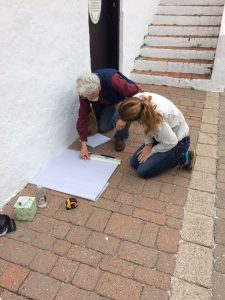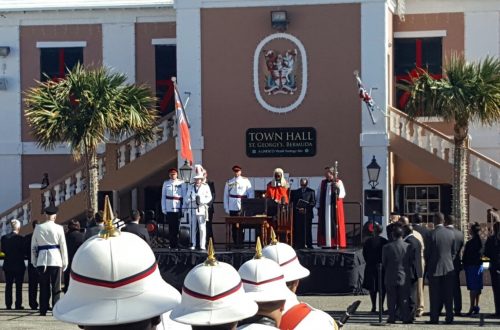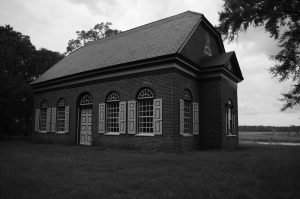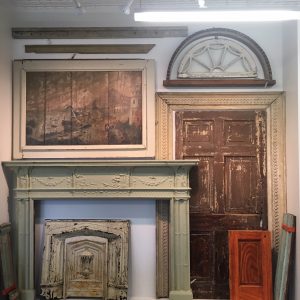 Students Morgan Granger and Meg Olson will be presenting a poster on their summer’s work on 43 Legare Street at the 6th International Architectural Paint Research Conference in March! The title of their work, “How paint research and analysis can aid in reconstructing missing decorative ornamentation: a case study at 43 Legare Street, Charleston, South Carolina.”
Students Morgan Granger and Meg Olson will be presenting a poster on their summer’s work on 43 Legare Street at the 6th International Architectural Paint Research Conference in March! The title of their work, “How paint research and analysis can aid in reconstructing missing decorative ornamentation: a case study at 43 Legare Street, Charleston, South Carolina.”
Abstract: The Charleston single house located at 43 Legare Street, the Charles Elliott House, commonly dated to 1759, was the subject of an extensive architectural investigation conducted in the summer of 2016. The investigation sought to determine original ornamentation and finishes of the main parlor of the first floor. Cross sectional analysis, careful paint removal, and research have revealed a number of interesting findings which indicate the house dates to the early 1770s. This poster explores the findings of graduate students, Morgan Granger and Meghan Olson, at this transitional Federal style house. All physical evidence was corroborated with research and compared to contemporary houses in Charleston to validate findings.
A thorough investigation of the mantle breast of the first floor east parlor was conducted to determine original finishes of the room. The paint analysis and removal of later woodwork, revealed many of the early decorative elements of the room, including the original size and forms of the lost mantle and its surround. Removal of later architectural elements revealed well preserved ghost marks, carpenter’s marks, and early faux finishes. The ghost marks left by the removal, and immediate covering, of the early mantle allowed for an accurate reconstruction, and indicated the precise location, of the lost mantle piece. The carpenter’s marks also aided in the reconstruction of the mantle and its surround.
Paint removal on the walls flanking the paneled over mantle unveiled further ghost marks of lost carved detailing. These marks were able to be traced by hand and in AutoCAD, and combined with research the ornamental woodwork was recreated. The two scrolls were preserved through the survival of an adhesive layer. The absence of paint layers in the area of the adhesive indicated that the missing woodwork was likely original to the decoration of the mantle breast. The other surviving woodwork, the paneled over mantle, rosettes, and broken pediment above the over mantle are all excellent examples of transitional Federal woodwork.
The faux finishes of the mantle breast are remarkable. There survives early marbling around the firebox opening, and layers of faux finishes on the broken pediment above the mantle. These finishes include a relatively early wood graining and a much later marbling. There is also a layer which appears to have a decorative speckled finish. These indicate that the house has been decorated to a high degree for its entire life. It has maintained its status as one of the great houses in Charleston as the many layers of paint and decorative finishes of the first floor east parlor indicate.
 With their first year of graduate school behind them, our rising second year students have scattered across the globe to being summer internships. Check out the list below to see where all of our students are spending their summers:
With their first year of graduate school behind them, our rising second year students have scattered across the globe to being summer internships. Check out the list below to see where all of our students are spending their summers:











































